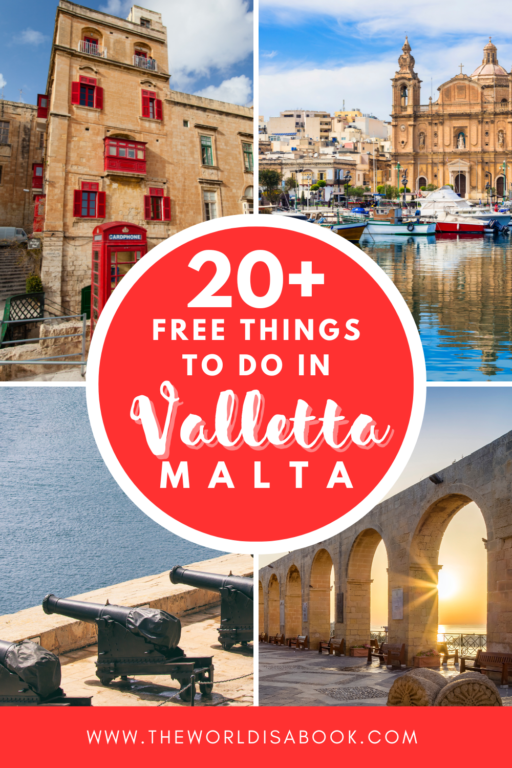Valletta, Malta’s capital city, is a treasure trove of history, culture, and stunning architecture. My husband and I loved our visit to this underrated capital city last year. We spent most of our five-day itinerary in Malta here since it was a transportation and cultural hub. While there are several wonderful paid attractions, here are 20+ free things to do in Valletta, Malta.
This is the only European capital declared to be a UNESCO World Heritage site by UNESCO. While it was a modern capital, it was also very beautiful, full of culture and so much rich history.
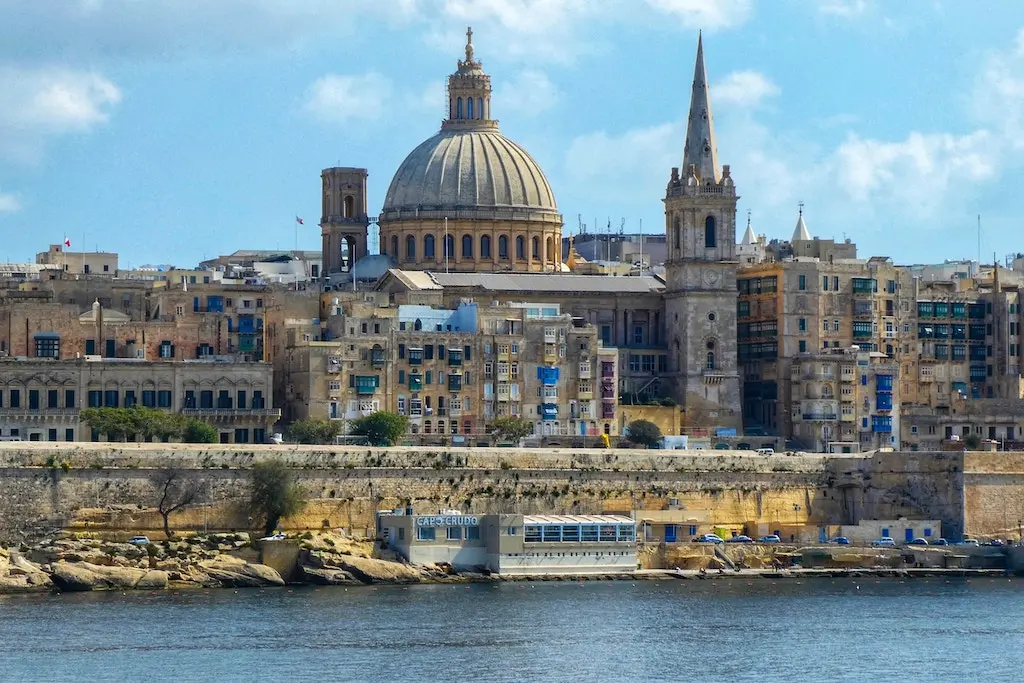
Explore the Streets of Valletta
Valletta is like a living museum, with its narrow cobblestone streets, colorful balconies, and charming squares. We really loved strolling through its winding alleys.
Republic Street is the main tourist street of Valletta. It gets very busy and flanked with many restaurants, cafes and shops. The street stretches from the City Gate to Fort St. Elmo.
This street is a wonderful place to walk through and one of the best places to get souvenirs. It is mostly pedestrianized with limited use of vehicles for commercial or government purposes.
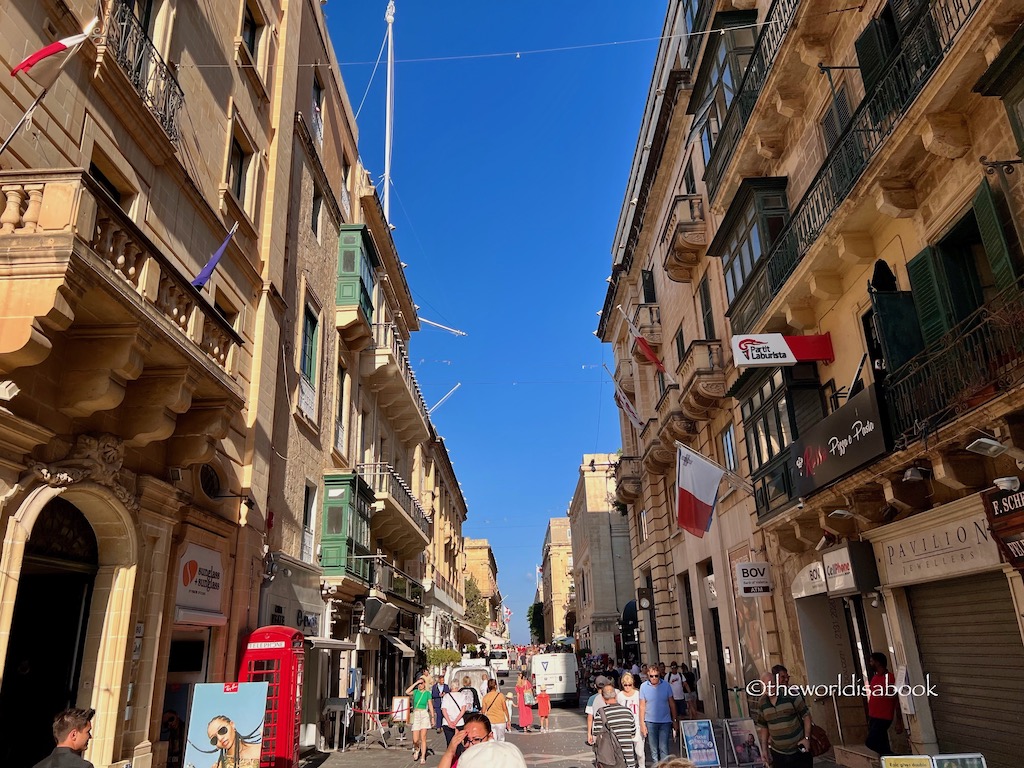
Another one of Valetta’s most popular street is Strait Street. This was Malta’s infamous Red Light District during the 19th and mid- 20th century frequented by British and American sailors.
Today, it is a haven of charming bars and restaurants with vibrant live-music scene at night. Walk through here for a quaint look at history and to find some of the best places to eat and hangout in the city.
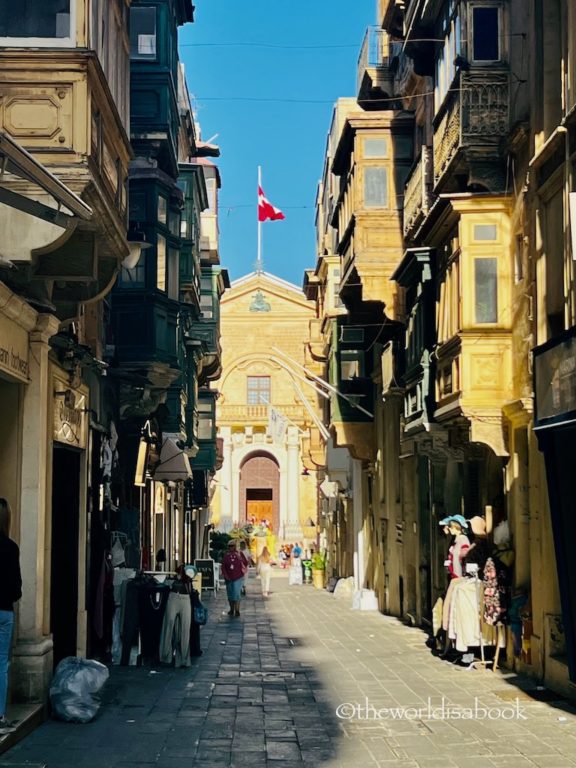
Admire the Balconies
Malta’s balconies that adorn many of the building facades give such a wonderful and unique characteristic to this island nation. The balconies are found all over Malta but there is a high concentration of them in Valetta. They are worth the neck strain.
These ornate and iconic balconies can be traced back to the 16th century with the Knights of St. John who ruled Malta at that time. While there are many conflicting stories of their histories, the consensus seems to be that the balconies or bay windows were of Arabic origin. They built them for women or the housewives to watch the world go by without being seen.
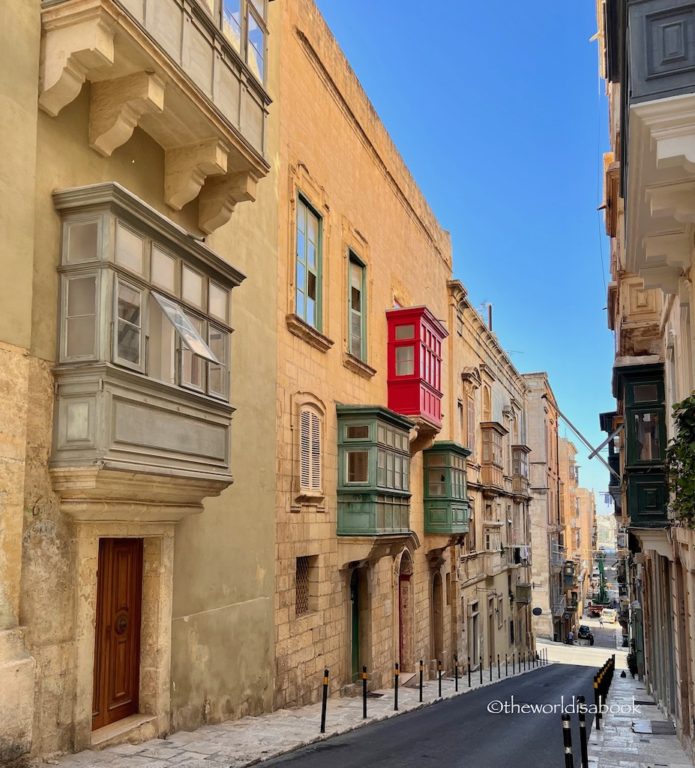
The Maltese balconies are typically enclosed wooden or wrought-iron structures that project from the facades of buildings. They also evolved into a symbol of status and luxury and reflected the influences of various periods, including Baroque, Rococo, and Moorish styles.
Exploring the streets of Valletta and admiring these balconies is a journey through time, offering visitors a glimpse into the island’s history, artistic evolution, and the legacy of its architectural treasures.
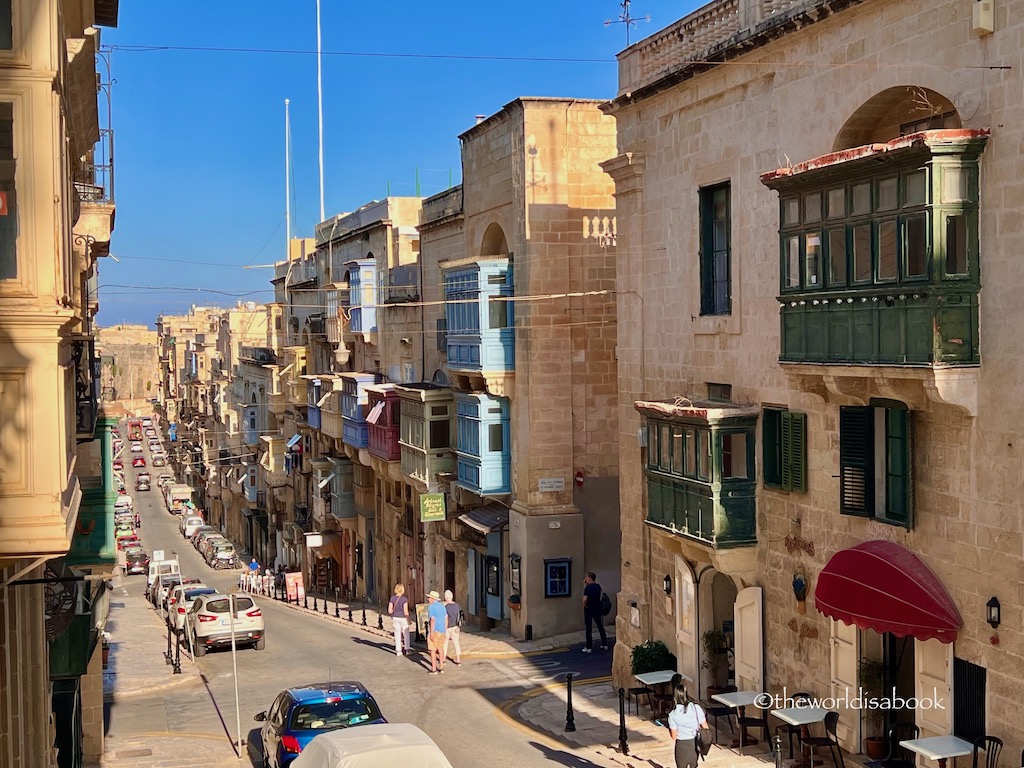
Marvel at the Triton Fountain
Located just outside the main City Gate, the Triton Fountain is a magnificent work of art that seems to guard the entrance to Valetta. The fountain is made up of three bronze mythological Tritons or Gods of the Sea in the middle.
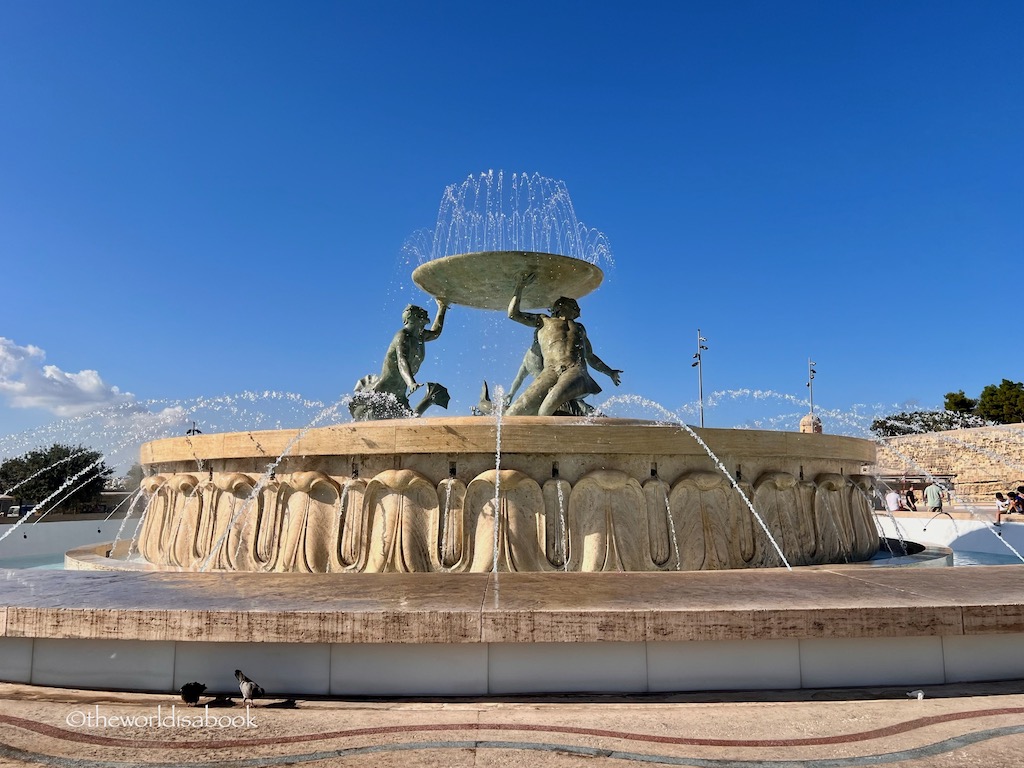
Designed by Vincent Apap, the prominent structure was fully constructed and completed in 1959. It has played an iconic role in many events and celebrations for the city and country.
It’s beautifully illuminated at night, making it an enchanting spot for a leisurely evening walk or to take stunning pictures. We enjoyed sitting on the steps of this fountain. It was a great spot for people watching too.
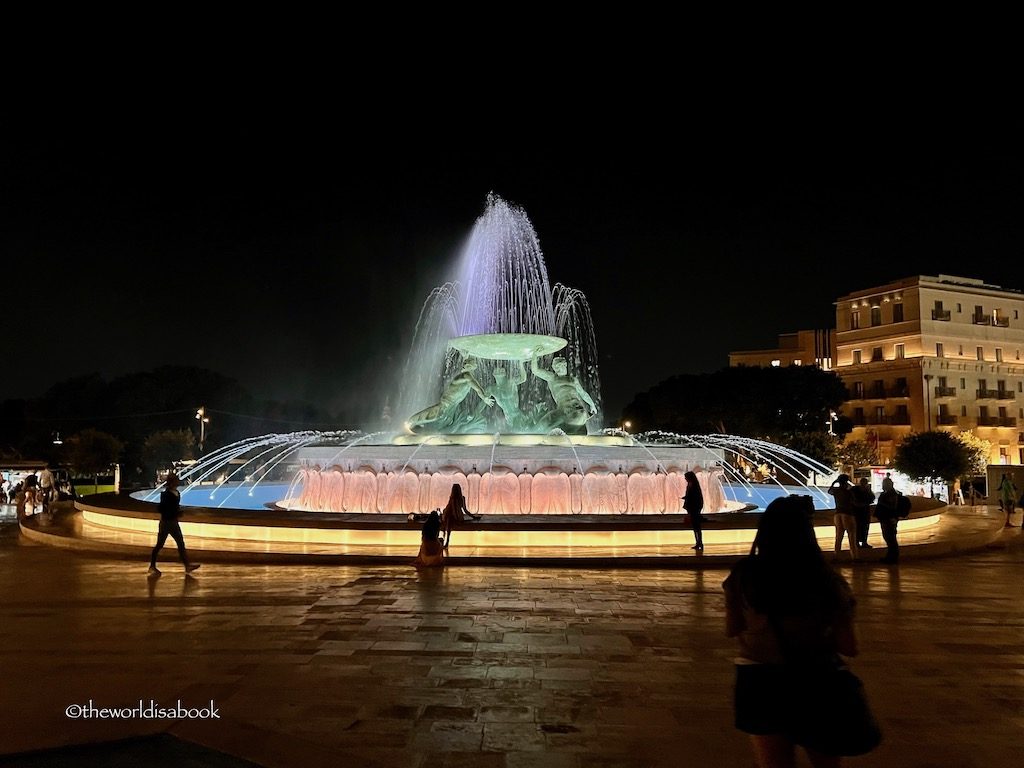
Visit the Siege Bell War Memorial
The Siege Bell War Memorial is a somber and simple but significant site. It commemorates the lives of people who fought and died for Malta during World War II.
The memorial, built in 1992, overlooks the Grand Harbor. The bell rings daily at noon. The bell has a Latin inscription which references Psalm 140 and translates to ‘You cast thy shadow upon my head during the time of war 1940–1943’.
Discover the Maltese Luzzu Boats
Head to the Grand Harbor and take in the sight of the vibrant Maltese luzzu boats. These traditional fishing boats are adorned with a pair of protective eyes and painted in bright colors.
They called the eyes “Eye of Crisis” or “Eye of Horus”, names for the God of Protection from evil in Phoenician tales. Fishermen believed these eyes protected them from evil and harm while they were out at sea. It’s a beautiful representation of Maltese folklore and tradition.
Families passed down the luzzus from generation to generation. They generally keep the colors of the luzzus the same after inheriting them due to superstitions.
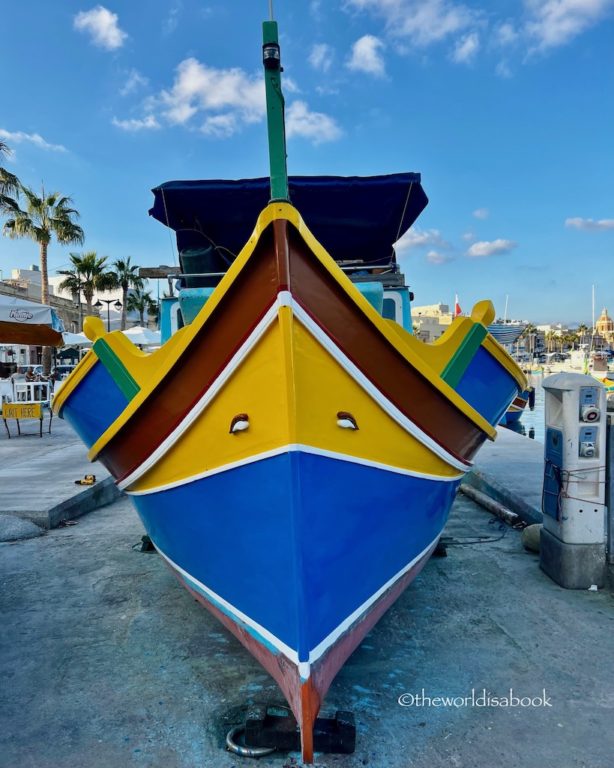
Watch the Changing of the Guards
Like many European cities with castles and palaces, it is always fun to watch the Changing of the Guard ceremonies. We have enjoyed the revelry and ceremonies that go along with them.
If you’re in Malta on the last Friday of the month, do not miss this centuries-old ceremony. It was too bad we missed this during our trip. The ceremony started in the 17th century when the Knights of St. John ruled Malta.
Head over to St. George’s square at 10:30 AM to watch the marching band and the guards changing duties in The Palace Valetta.
Explore the Mediterranean Conference Centre
The Mediterranean Conference Centre (MCC) is a 16th-century historic building that often hosts cultural events and exhibitions. Even if you don’t catch an event, you can wander around its exterior and admire its grand architecture, which is particularly stunning in the evening when lit up.
The MCC is one of Valletta’s landmarks and is located by Fort St. Elmo with incredible views overlooking the Grand Harbour. The building used to be the “Sacra Infermeria” of the Order of St John of Jerusalem and was once considered one of Europe’s best hospitals.
Witness the Saluting Battery
Make your way to Upper Barrakka Gardens for a daily treat at noon and 4 pm. The Saluting Battery is a traditional firing of the cannons.
This daily ceremony is a living testament to Malta’s rich military history and maritime traditions. It offers visitors a unique opportunity to experience the resounding boom of the cannon fire while taking in panoramic views of the Grand Harbor and the Three Cities.
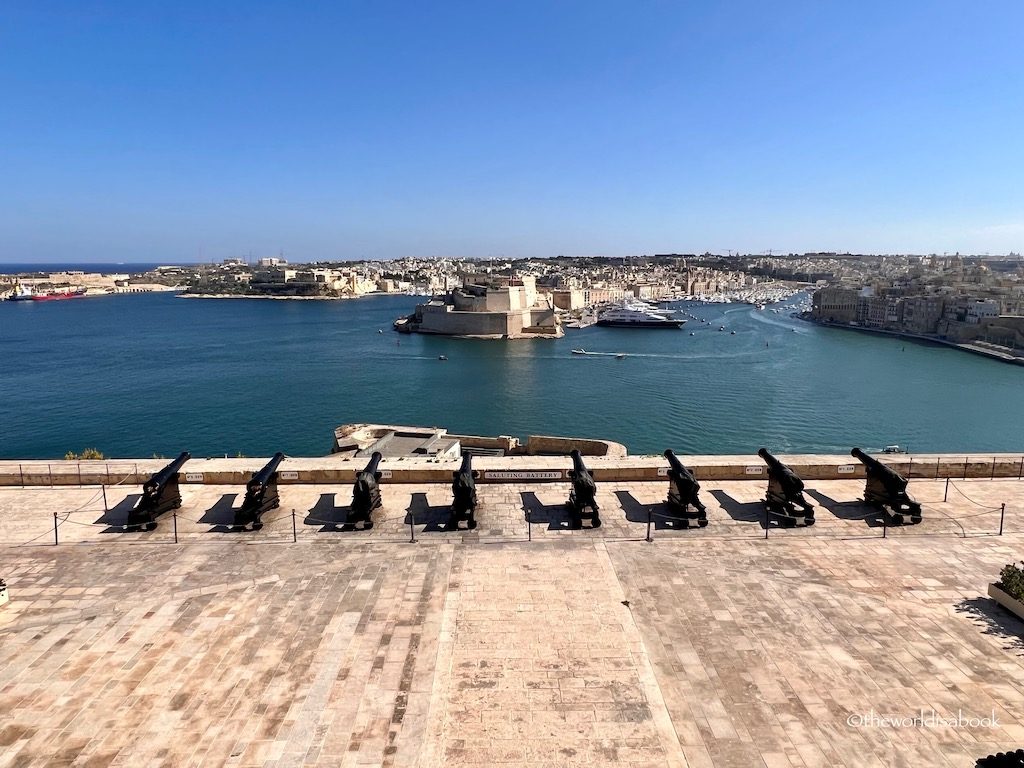
The Saluting Battery is also an excellent history lesson. The guides often share stories of Malta’s wartime past. Come early and claim your spot in the balcony area to watch the cannon firing. Watching from up here was free.
We paid a mere three Euros per person to go inside and below to be closer to the cannon firing. This also included an in-depth history lesson and several exhibits of the cannons, the ceremony and Malta’s history. It was well worth the small admission fee to walk around the lower balcony and see the guards and cannons up close.
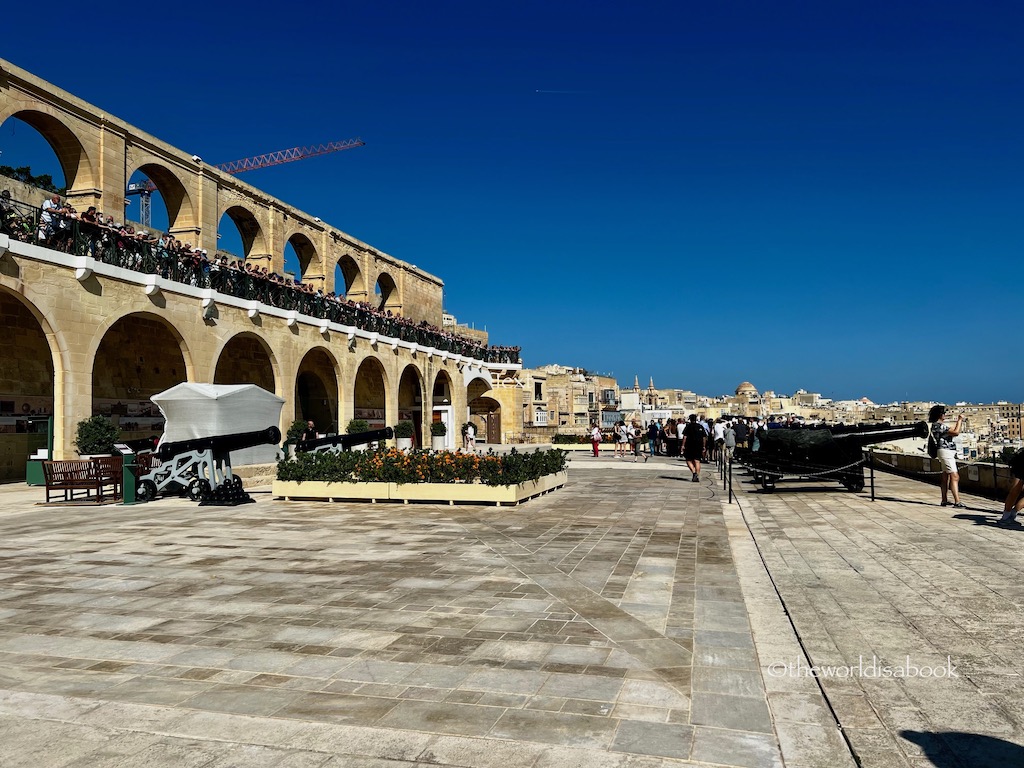
Explore the Valletta Waterfront
The Valletta Waterfront is a beautiful promenade lined with colorful, historic buildings. It’s an ideal place for a leisurely stroll on the promenade, especially in the evening when the lights give it a magical atmosphere. You can also catch street performers and musicians along the waterfront.
The historic waterfront is a hub of food, shopping and entertainment. Located in the Grand Harbour, it has some of the Islands’ most impressive views.
The waterfront’s iconic buildings were built in 1752. The 19 warehouses are still known as “pinto stores’ that were once used by the Knights of Malta. The stores’ doors have been painted in vibrant colors and usually represented the goods that were once stored in the warehouses like blue for fish rr red for wine.
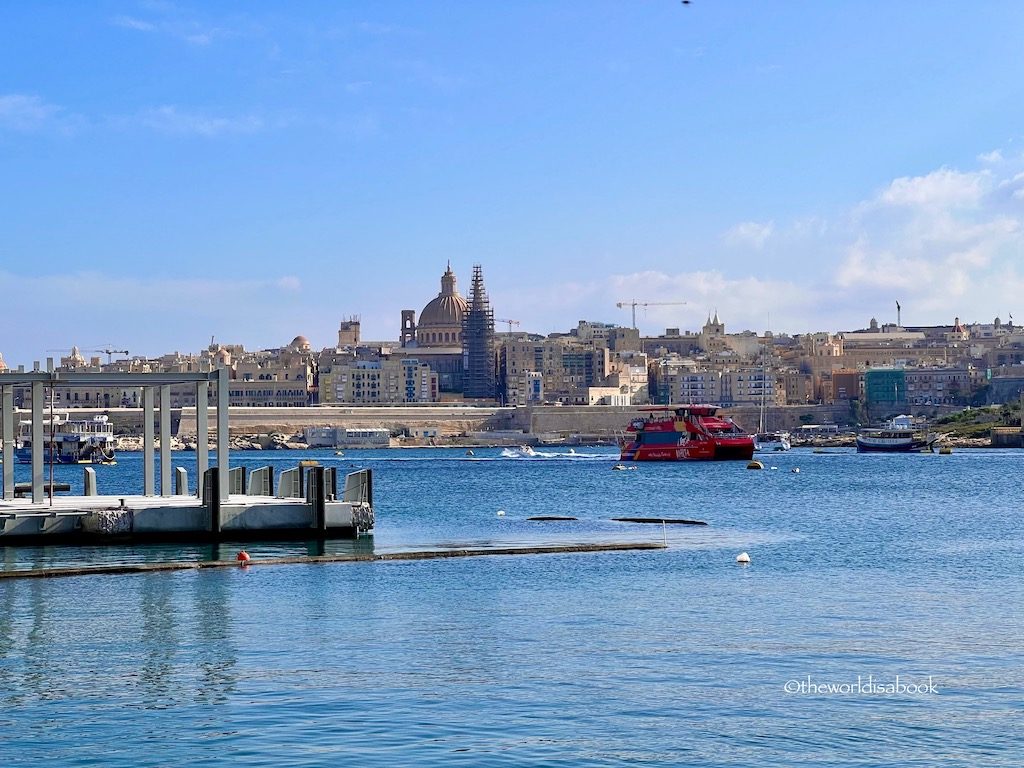
Attend Complimentary Cultural Festivals and Events
Valletta frequently hosts free cultural festivals and events, particularly during the summer months. Keep an eye out for art exhibitions, music festivals, and local celebrations.
These events offer a great opportunity to immerse in Maltese culture without spending a dime. Check out these websites for upcoming events during your visit:
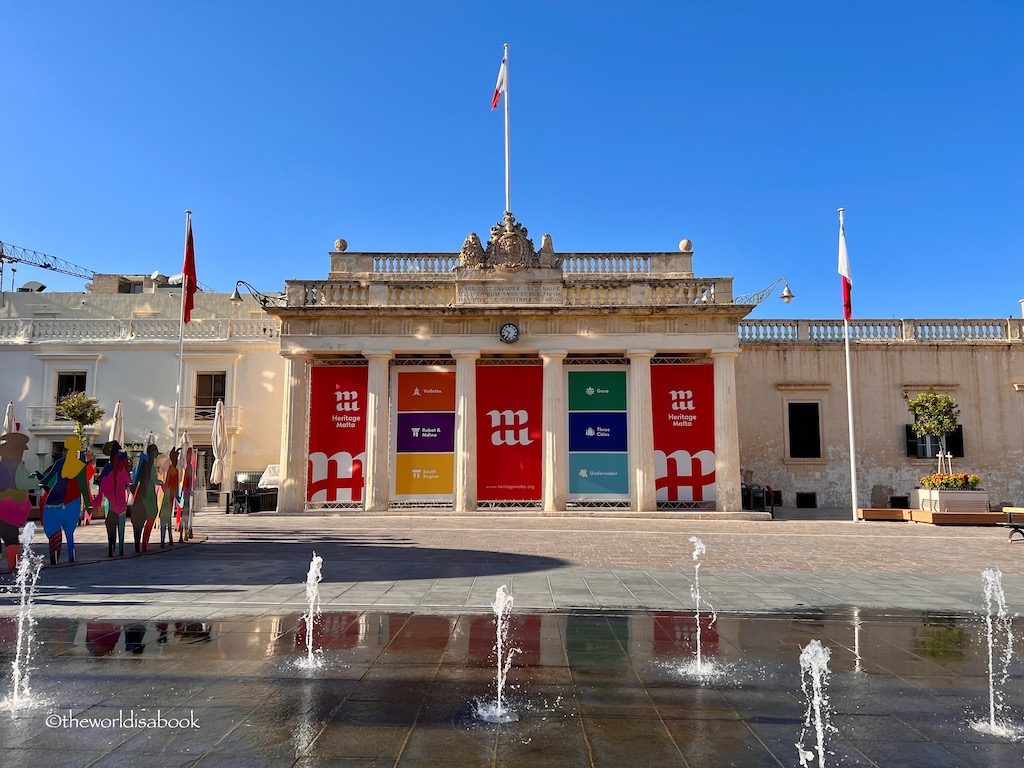
Learn in Museums
Valletta is home to several museums and cultural institutions that offer free admission. These museums provide a deeper understanding of the island’s history, art, and culture.
Here are a few notable ones to explore:
Malta Archaeological Museum: While there is an admission fee for the main exhibition, the courtyard and the ground floor of the Auberge de Provence, which houses the museum, are open to the public for free. The courtyard s a delightful place to visit and soak in the atmosphere of this historic building.
Malta Maritime Museum Courtyard: The Malta Maritime Museum in Birgu (Vittoriosa) is another place worth visiting. While the museum itself requires paid admission, the courtyard is open to the public and offers fantastic views of the Grand Harbor and historic ships.
Heritage Malta manages over 90 museums, landmarks, and national monuments throughout the country. Check out their website when they offer free admission to certain museums throughout the year.
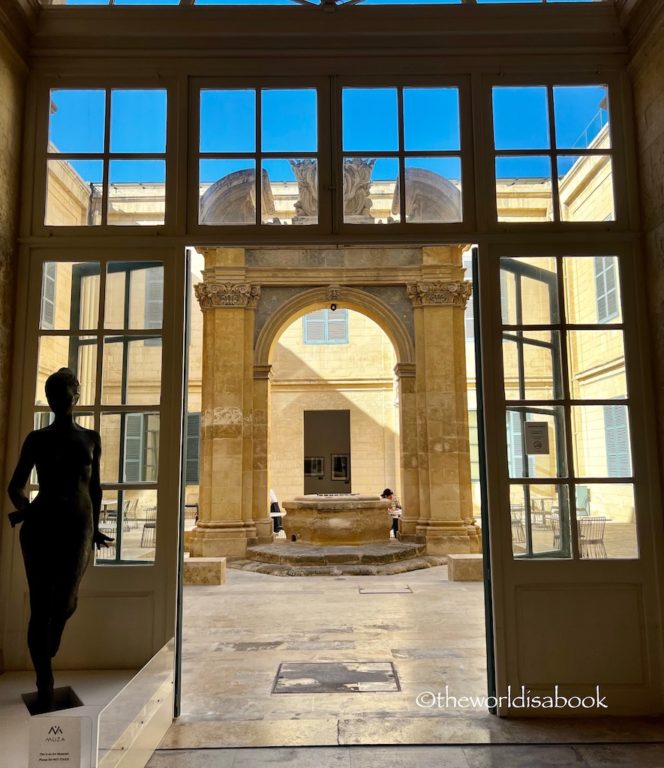
Join Guided Walking Tours
Like many European cities, locals offer free guided walking tours around Valetta. These tours offer wonderful insights into Valletta’s history and culture.
Colour My Travel offers a free 90-minute Valetta walking tour that focus on the city’s best historical sights and attractions along with some tips from the locals. Tours are in English and occur on Wednesday and Saturday and while free are donation based.
Ben’s Valletta Free Walking Tour is a two-hour tour of important sights around Valetta along with some local tips and restaurant recommendations. This is also a tip-based walking tour that occurs Monday, Thursday, Saturday and Sunday.
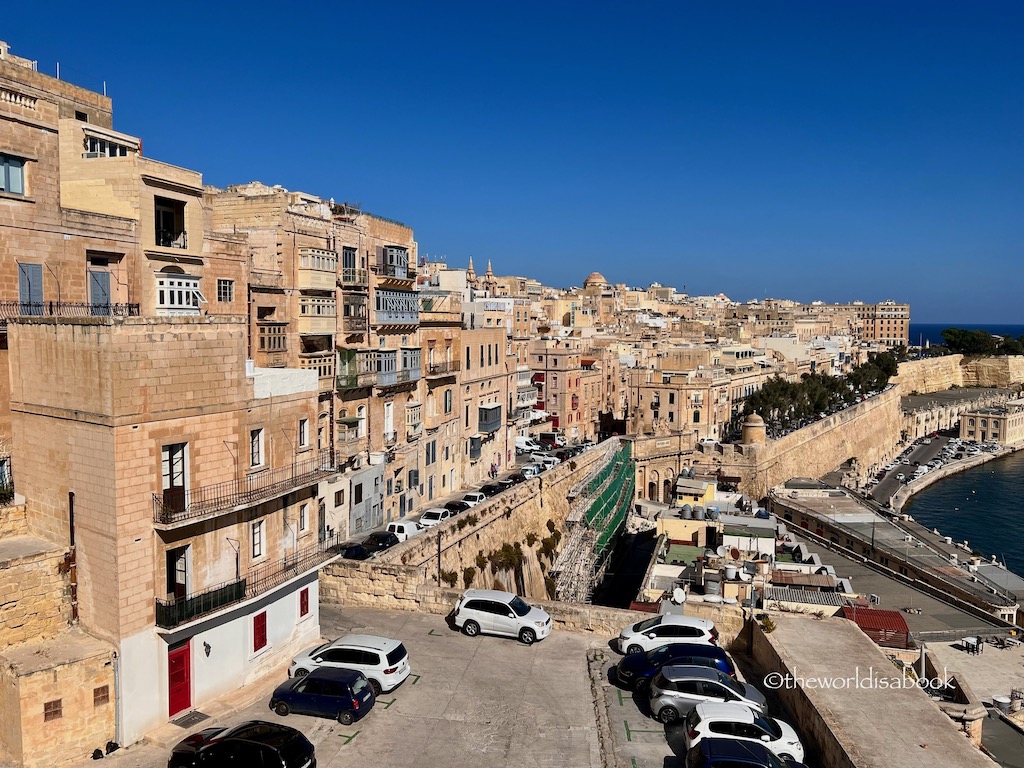
Check Out Local Markets
Exploring local markets is a fantastic way to immerse yourself in the vibrant culture and traditions of Valletta. The local markets are great for finding affordable souvenirs and fresh produce. While you may be tempted to shop for local products, wandering through these markets is an enjoyable and cost-free experience.
Is-Suq tal-Belt (Valletta Food Market): This historical food market, located in the heart of Valletta, offers a lively atmosphere and a wide array of fresh produce, local delicacies, and traditional snacks. Even if you’re not shopping, a visit to the Valletta Food Market is an excellent way to experience Maltese culinary traditions.
We ate at a few places here because they offered a variety of food stalls and were affordable options for eating out. The building offered plenty of indoor seating and clean restrooms.
The Arkadia Foodstore is located on the lower level. It has plenty of fresh produce, a deli and butcher counter. It was a great stop to shop for some essentials.
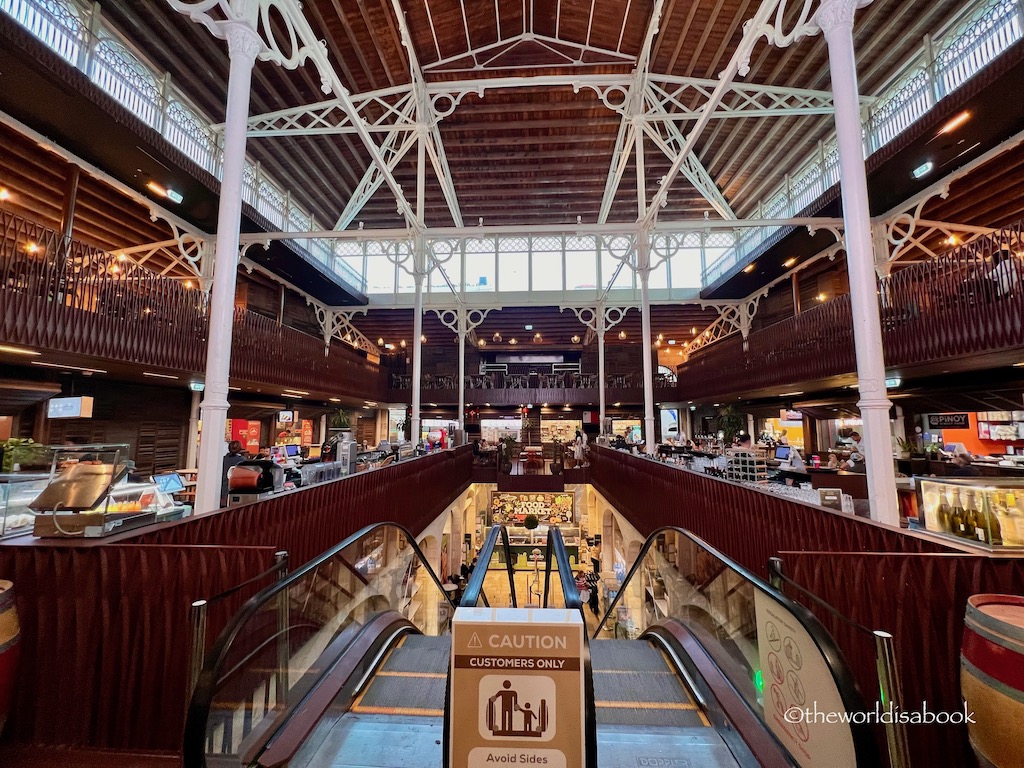
Malta Sunday Market in Marsaxlokk: While not in Valletta, the Marsaxlokk Sunday Market is worth a visit if you have a bit of extra time. It’s a bustling open-air market where you can browse through stalls of artisan goods, fresh fish, local crafts, and more. Marsaxlokk is easily accessible by public transport and provides a unique cultural experience.
We went to Marsaxlokk on a weekday so missed the bustling weekly Sunday market. But, there were still some stalls with souvenirs and other products. On a side note, we highly recommend visiting Marsaxlokk for its seaside ambience and delicious fresh seafood from a variety of restaurants.
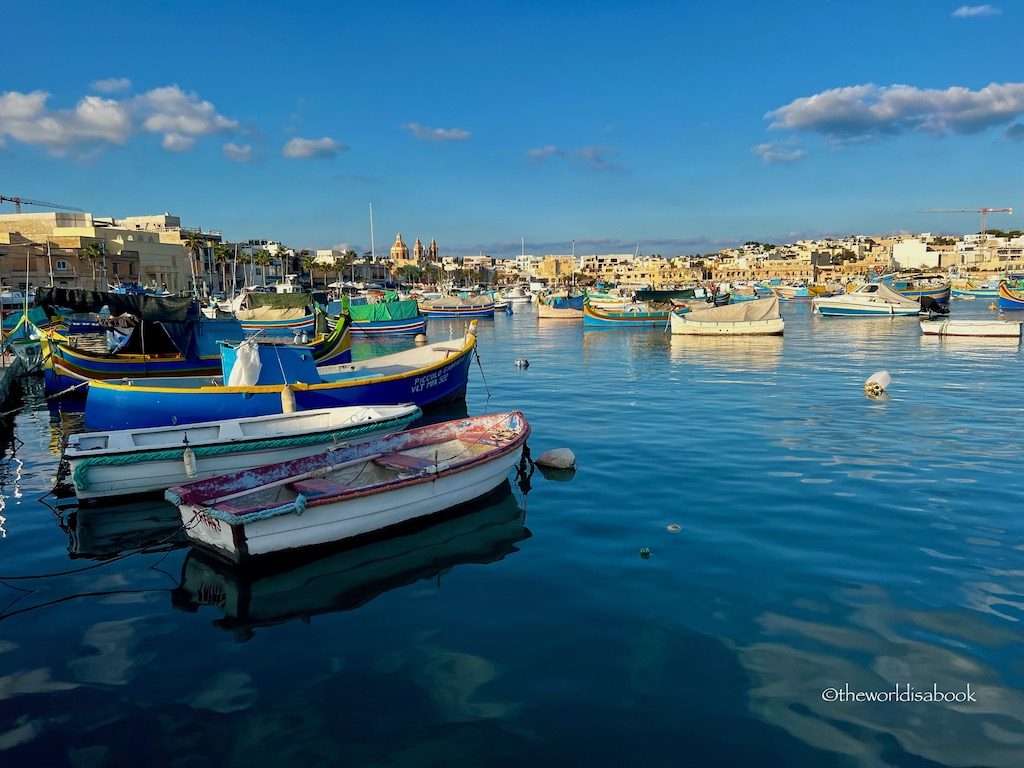
Enjoy the Sea
Malta is surrounded by beautiful beaches, and swimming in the Mediterranean Sea is always free. Consider some time at the beach for a memorable and cost-effective experience. It also offers some areas to just look out and enjoy the water.
Valetta is a peninsula and both sides of the city are used as harbors so there really is no great beaches with sand. But, there are some spots around the city for a swim. For beaches with sand and more space, it’s better to go a bit farther out of Valetta.
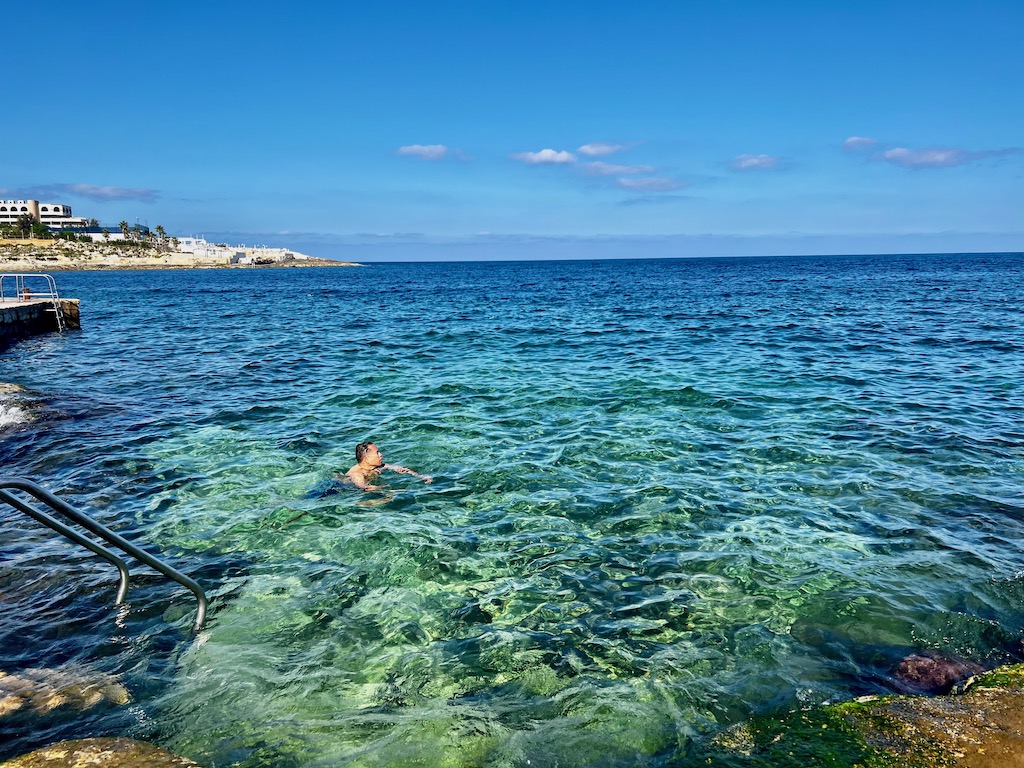
St. Elmo’s Bay is located on the city’s Marsamxett Harbour area. While it has a rocky coastline, visitors can still wade into the open sea.
Visitors can also find Wuestenwinds Beach across from the he Mediterranean Conference Centre. Among some fisherman’s boathouses are also some steps to get into the water for a swim.
If you want to travel outside of Valetta, here are a couple of beaches worth the trip.
- Mellieħa Bay is the island’s most popular and largest sandy beach. It’s very family-friendly and has lifeguards and several amenities. It’s located about 40 minutes from Valetta near the northernmost part of the island.
- Sliema beaches – Located less than 20 minutes from Valetta, there are several swimming areas along the Sliema to St. Julian’s promenade. We enjoyed walking in this seaside area and taking in the Mediterranean views. We saw several people swimming in various spots. Fond Ghadir, with its long beach and some natural pools, is a popular spot for locals and visitors.
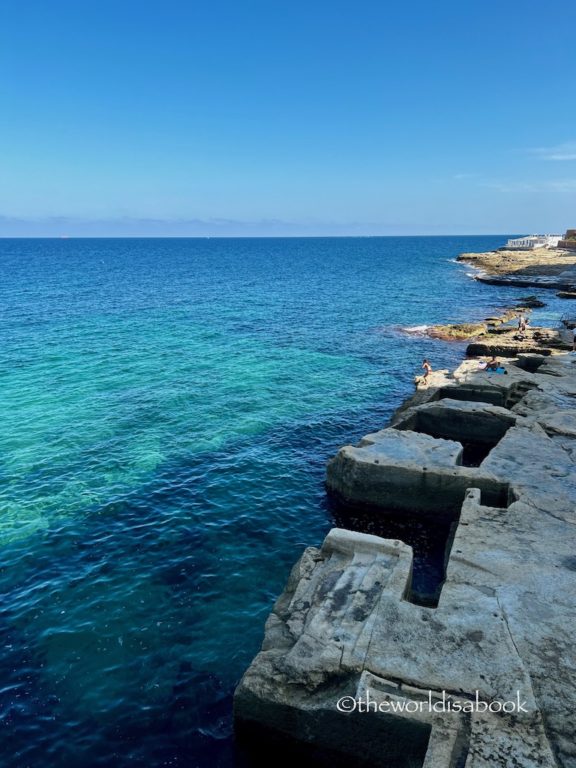
Explore the Parks and Gardens
Valletta and its surroundings offer several picturesque parks and gardens where you can relax, have a picnic, or simply enjoy the beautiful outdoor spaces. They’re a wonderful way to get in touch with nature without spending a dime.
Upper Barrakka Gardens: The Upper Barrakka Gardens offer more than just breathtaking views. It’s a peaceful place to relax, unwind, and appreciate the beauty of the surrounding architecture and the Grand Harbor.
A large white marble plaque on a column of the grand colonnade of the Upper Barrakka Gardens commemorating the memory of American Servicemen who fought to preserve Malta’s freedom during World War II.
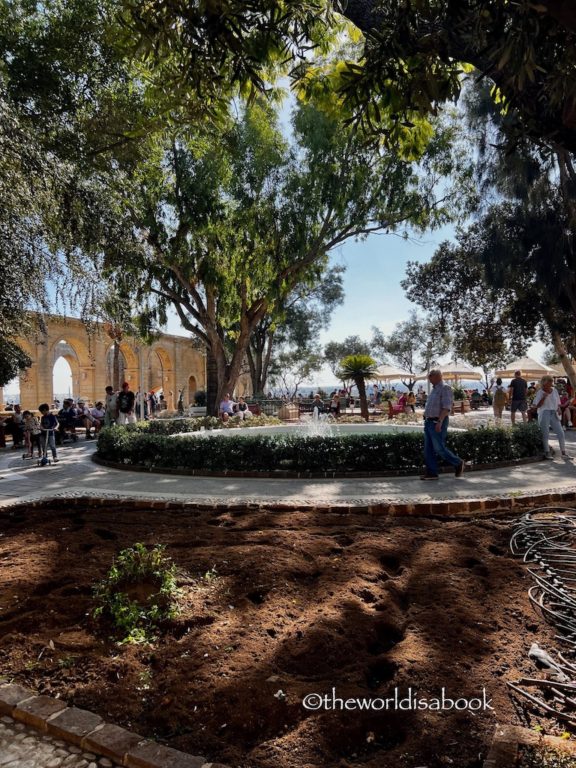
Lower Barrakka Gardens: Just below the Upper Barrakka Gardens, the Lower Barrakka Gardens offer a peaceful retreat from the city’s hustle and bustle. This garden features lush greenery, statues, and benches. It provides a tranquil setting for a leisurely stroll or a moment of relaxation.
Hastings Gardens: Located on top of the St. John’s and St. Michael’s bastions of Valletta, this public garden offers stunning views of Marsamxett Harbor and the Sliema skyline. The gardens are a great place to sit and admire the scenery or enjoy a packed lunch while taking in the vistas.
It has a few monuments around the garden and plenty of wooden benches to relax. The most notable monument is in honor of Lord Hastings who was Malta’s former British governor and buried here.
Lascaris Bastion Garden: Located just outside the entrance to the Lascaris War Rooms, this garden provides beautiful views of the Grand Harbor and Fort St. Angelo. It’s a peaceful spot to unwind and take in the breathtaking surroundings.
Admire and Enter the Churches
Valletta has many historic churches. Each has its own unique architectural style and cultural significance. I have dragged my family to many European churches over the years and have always admired all the fine details of the interior.
While some churches may charge an entrance fee for access to specific areas or attractions inside, many welcome visitors to explore their beautiful interiors free of charge.
Here are a few of the churches in Valletta where you can admire the stunning architecture and experience their cultural and historical importance. Please keep in mind that these are places of worship and dress accordingly.
St. John’s Co-Cathedral: This 16th-century Roman Catholic cathedral in the heart of Valletta is dedicated to Saint John the Baptist. This is considered as Malta’s most beautiful and impressive church
While the museum and oratory of St. John’s Co-Cathedral require an entrance fee, you can still visit the main hall of this iconic cathedral for free. The interior is a breathtaking masterpiece of Baroque art and design, with a dazzling display of gilded carvings, paintings, and marble work.
If you’re Catholic, Mass services are held at 8:30 AM on weekdays and at various times on Sundays. During mass, the cathedral is not accessible to tourists but free to enter if you’re attending mass.
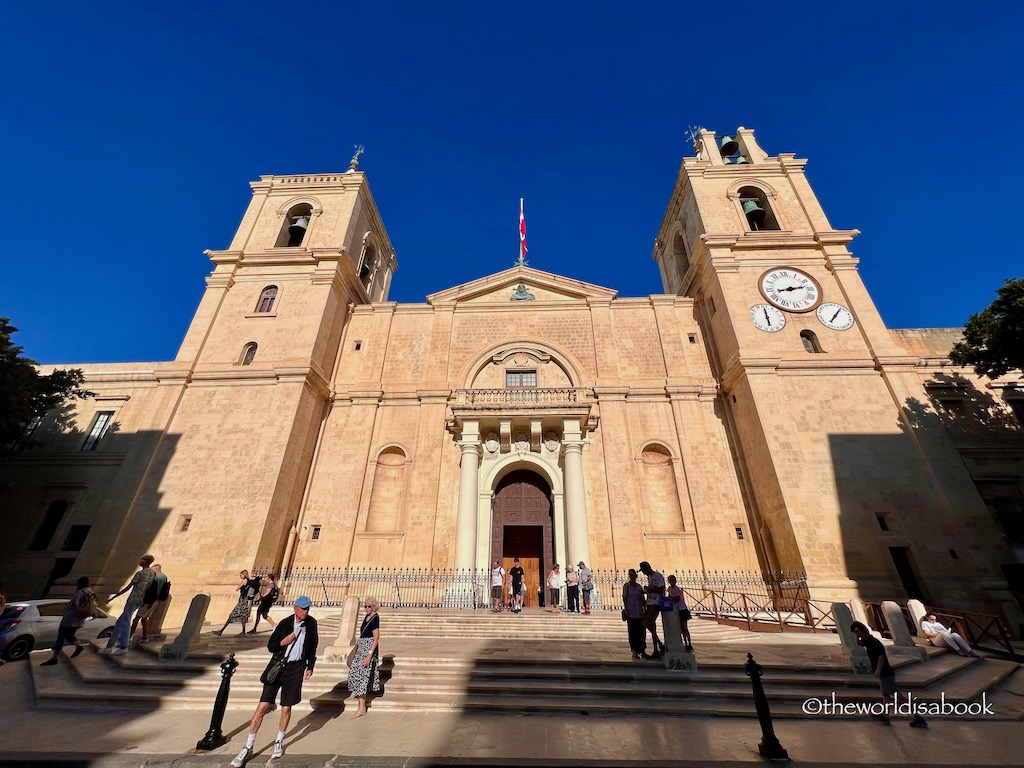
St. Paul’s Pro Cathedral: This 19th-century Anglican cathedral is located at the end of Archbishop Street. The cathedral’s serene interior is open free to visitors, offering a peaceful space for reflection and admiration of its neo-Gothic architecture. The cathedral offers an audio guide in several languages. You can also do a virtual guided tour here.
St. Augustine Church: Nestled in the heart of Valletta, St. Augustine’s Church is known for its stunning Baroque architecture and dome. The interior features impressive stonework, religious art, and beautifully decorated altars.
Visitors are welcome to explore the 18th-century church and take in its artistic splendor. The church also has some artifacts from its original structure.
More Churches to Explore
St. Francis of Assisi Church: This charming church is located in the heart of Valletta and is a serene place. The simple yet elegant interior is a refreshing contrast to the grandeur of some of the other churches in the city.
St. Catherine of Italy Church: Tucked away in Valletta’s quiet streets, the Church of St. Catherine of Alexandria or also known as the St. Catherine of Italy Church is a small but charming place of worship. Its interior is adorned with beautiful artworks including Italian art. It was a delightful find especially for those who appreciate fine details in religious architecture.
The Italian Knights of St. John built this beautiful church in 1576 and was extended in the 17th century. The church is listed on the National Inventory of the Cultural Property of the Maltese Islands.
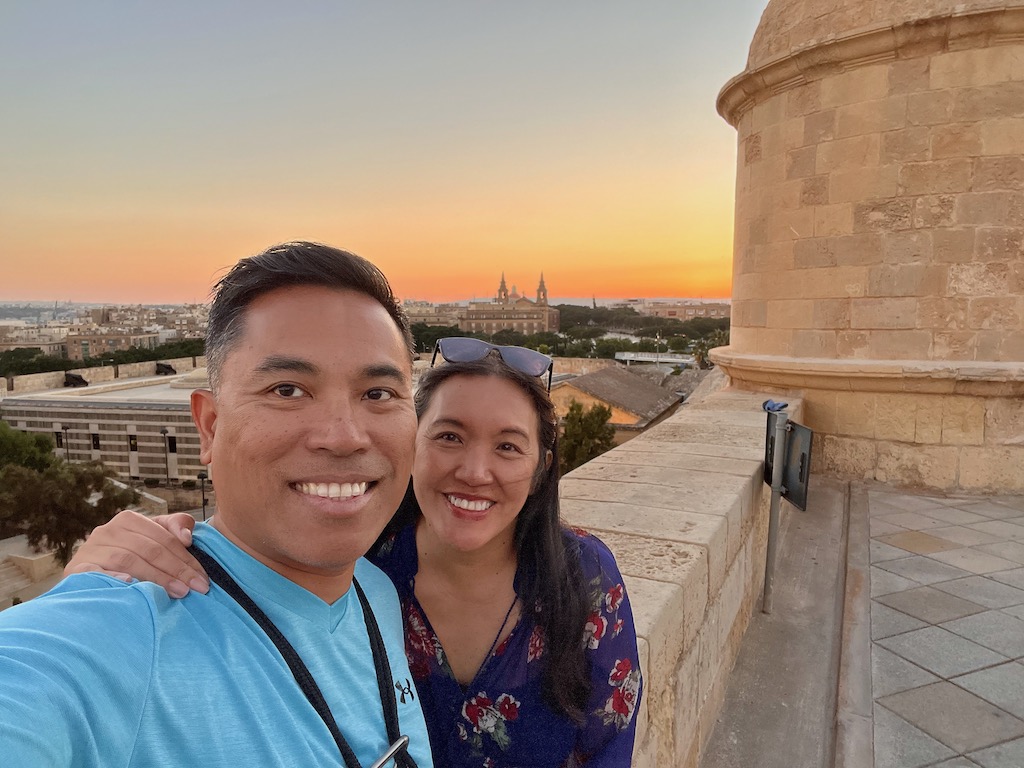
*Any other free things to do in Valletta you want to add?
Pin it for later!
